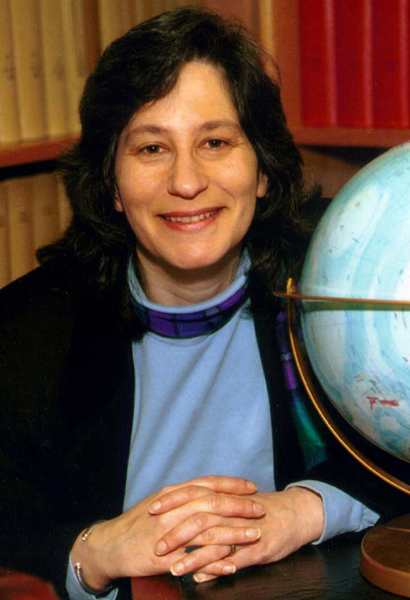

Birth: 1956
Specialty: Atmospheric Science
Major Contributions:
Part of the team that concluded CFCs were causing a hole in the Earth’s Ozone Layer
Co-chair of Working Group I for the Fourth Assessment Report of the Intergovernmental Panel on Climate Change
National Women’s Hall of Fame
Dr. Susan Solomon is one of the world’s leaders in the field of atmospheric science–the study of the Earth’s atmosphere, its processes, and the effects of other systems on the atmosphere.
Inspired to study science by watching The Undersea World of Jacques Cousteau. a high school science fair project would focus her attention on the atmosphere. Earning bachelor’s and doctoral degrees in chemistry, she was hired by the National Oceanic and Atmospheric Administration, where she would spend most of her career.
Starting as a research chemist in 1981, she was examining the depletion of the ozone layer in Antarctica. Since the late 1970’s scientists had been tracking an overall drop in the total amount of ozone in the Earth’s stratosphere and a much larger decrease in stratospheric ozone around Earth’s polar regions–known as the ozone hole.
In her research Solomon proposed a theory explaining how and why the hole was occurring in Antarctica–the chlorofluorocarbon free radical reaction mechanism.
To test this hypothesis, Solomon led teams of scientists on expeditions to Antarctica to obtain some of the first chemical measurements that would show that the levels of chlorine dioxide were one hundred times greater than predicted. Considered the first direct evidence that chlorine chemistry, and in turn CFCs, were the cause of the Antarctic ozone hole, her work would become the basis of an international agreement aimed at protecting the ozone layer by regulating damaging chemicals.
The importance of her research and leadership were acknowledged in the naming of Antarctica’s Solomon Glacier and Solomon Saddle, as well as being awarded the National Medal of Science in 1999.
Working at NOAA as a senior scientist from 1991 to 2012, she continued her work on ozone depletion and added aspects of climate change and examining the links between the two. From 2002 to 2008 she served as the co-chair of Working Group 1 of the Intergovernmental Panel on Climate Change.
After leaving NOAA she was hired at MIT as a Professor of Atmospheric Chemistry & Climate Science, where she continues her work regarding issues relating to both atmospheric chemistry and climate change.
Written by Angela Goad
Sources:
NOAA: Susan Solomon: Pioneering Atmospheric Scientist
National Women’s Hall of Fame: Susan Solomon
See Also:
OpenSky: Oral History Interview with Susan Solomon
National Oceanic and Atmospheric Administration
